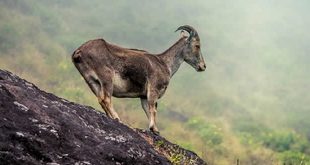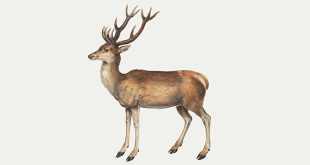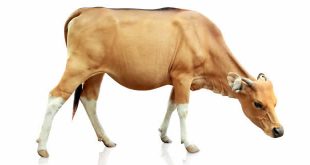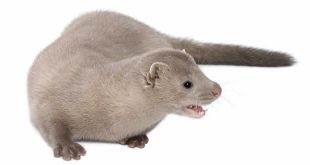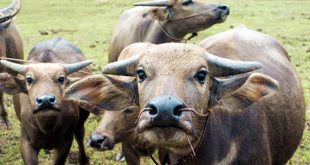 Wolf — The gray wolf (Canis lupus), also known as the timber wolf or wolf, is a mammal of the order Carnivora. The gray wolf is the largest wild member of the Canidae family and an ice age survivor originating during the Late Pleistocene around 300,000 years ago. Its shoulder height ranging from 0.6 to 0.9 meters (26-36 inches) and its weight varying between 32 and 68 kilograms (70-150 pounds). DNA sequencing and genetic drift studies indicate that the gray wolf shares a common ancestry with the domestic dog (Canis lupus familiaris). A number of other gray wolf subspecies have been identified, though the actual number of subspecies is still open to discussion.
Wolf — The gray wolf (Canis lupus), also known as the timber wolf or wolf, is a mammal of the order Carnivora. The gray wolf is the largest wild member of the Canidae family and an ice age survivor originating during the Late Pleistocene around 300,000 years ago. Its shoulder height ranging from 0.6 to 0.9 meters (26-36 inches) and its weight varying between 32 and 68 kilograms (70-150 pounds). DNA sequencing and genetic drift studies indicate that the gray wolf shares a common ancestry with the domestic dog (Canis lupus familiaris). A number of other gray wolf subspecies have been identified, though the actual number of subspecies is still open to discussion.
Expansion has had a dramatic effect on wolves. Though once abundant over much of North America and Eurasia, the gray wolf inhabits a very small portion of its former range because of widespread destruction of its habitat, human encroachment of its habitat, and the resulting human-wolf encounters that sparked broad extirpation. Considered as a whole, however, the gray wolf is regarded as being of least concern for extinction according to the International Union for the Conservation of Nature and Natural Resources. Today, wolves are protected in some areas, hunted for sport in others, or may be subject to extermination as perceived threats to livestock and pets.
Gray wolves play an important role as apex predators in the ecosystems they typically occupy. Gray wolves are highly adaptable and have thrived in temperate forests, deserts, mountains, tundra, taiga, and grasslands.
Wolves have been featured in the folklore and mythology of many cultures throughout history. Norse mythology tells the legend of the giant Fenrir. More sympathetic depictions include the suckling of Romulus and Remus in the Roman creation story. Wolves have also appeared in Western fairy tales such as Little Red Riding Hood and the Three Little Pigs, in which the wolf plays the role of the villain.
Wolf weight and size can vary greatly worldwide, tending to increase proportionally with latitude as predicted by Bergmann’s Rule. In general, height varies from 0.6 to 0.95 meters (26-38 inches) at the shoulder and weight ranges from 32 to 62 kilograms (70-135 pounds), which together make the gray wolf the largest of all wild canids. Although rarely encountered, extreme specimens of more than 77 kg (170 lb) have been recorded in Alaska and Canada. The heaviest wild wolf on record, killed in Alaska in 1939, was 80 kg (175 lb). The smallest wolves come from the Arabian Wolf subspecies, the females of which may weigh as little as 10 kg (22 lb) at maturity. Females in any given wolf population typically weigh about 20% less than their male counterparts. Wolves can measure anywhere from 1.3 to 2 meters (4.5-6.5 feet) from nose to the tip of the tail, which itself accounts for approximately one quarter of overall body length.
Wolves have bulky coats consisting of two layers. The first layer is made up of tough guard hairs that repel water and dirt. The second is a dense, water-resistant undercoat that insulates. The undercoat is shed in the form of large tufts of fur in late spring or early summer (with yearly variations). A wolf will often rub against objects such as rocks and branches to encourage the loose fur to fall out. The undercoat is usually gray regardless of the outer coat’s appearance. Wolves have distinct winter and summer pelages that alternate in spring and autumn. Females tend to keep their winter coats further into the spring than males. North American wolves typically have longer, silkier fur than their Eurasian counterparts.
Wolves can communicate visually through a wide variety of expressions and moods ranging from subtle signals, such as a slight shift in weight, to more obvious ones, such as rolling on their backs to indicate complete submission.
 Kids Portal For Parents India Kids Network
Kids Portal For Parents India Kids Network

